And once a candidate comes through the door, the onboarding, training, retention and engagement strategies are often lacking, increasing turnover and keeping that vicious cycle going.
But what if we approached employee marketing the same way we approach client marketing?
Modern marketing strategies focus on three key areas:
So, what if we applied these same principles to employee recruitment and retention?
Employee engagement is what enables companies to succeed (or makes them fail) in their battle to attract and retain the best fitting, high performing and fiercely loyal workforce.
Employee engagement can be viewed through the lens of Maslow’s hierarchy of needs – a motivation theory which states that five categories of human needs dictate an individual’s behavior.
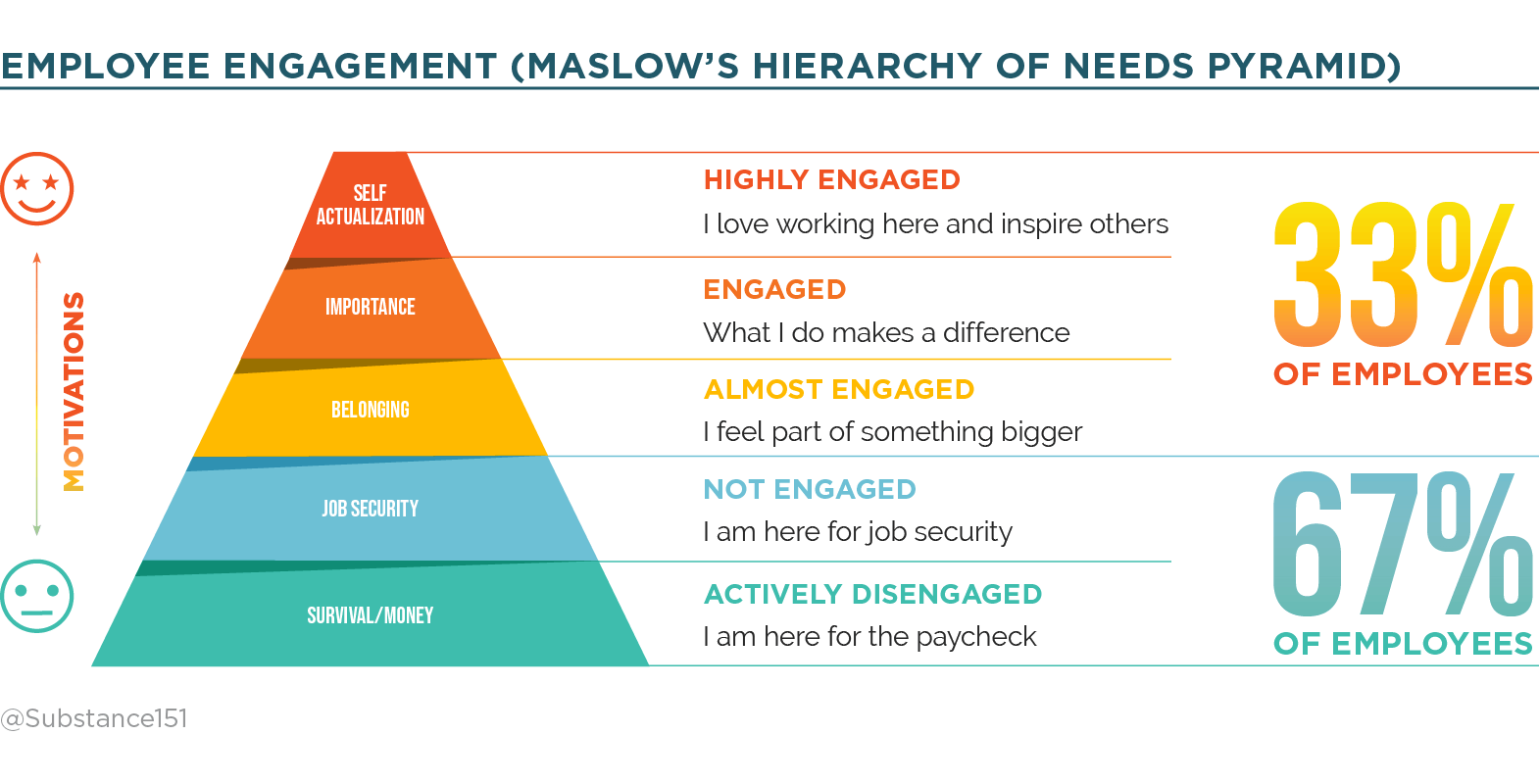
At the bottom of the pyramid, low engagement results in transactional relationships – people do only what’s required in exchange for a paycheck.
Moving up the pyramid, employee engagement and affinity continue to increase, leading to lower turnover and stronger brand advocacy. This is where you want to be!
But getting to the top is not easy.
It requires an intentional, disciplined and ongoing effort to master the alignment of business strategy, brand, culture and employee experience. It also requires a better understanding of the “ideal employee persona” and creating an employee experience that’s authentic, relevant, and will attract people who share your goals, values and beliefs.
There are astounding statistics about employee disengagement at work – 68% of employees are either not engaged or actively disengaged (source: Gallup).
Sadly, in most companies, employee engagement efforts boil down to one of two things: HR-sponsored team building and compliance activities or an over-abundance of perks and not much else.
Neither one is likely to improve your employee engagement statistics. What will improve employee engagement, though, is creating a distinct, brand-based culture and employee experience.
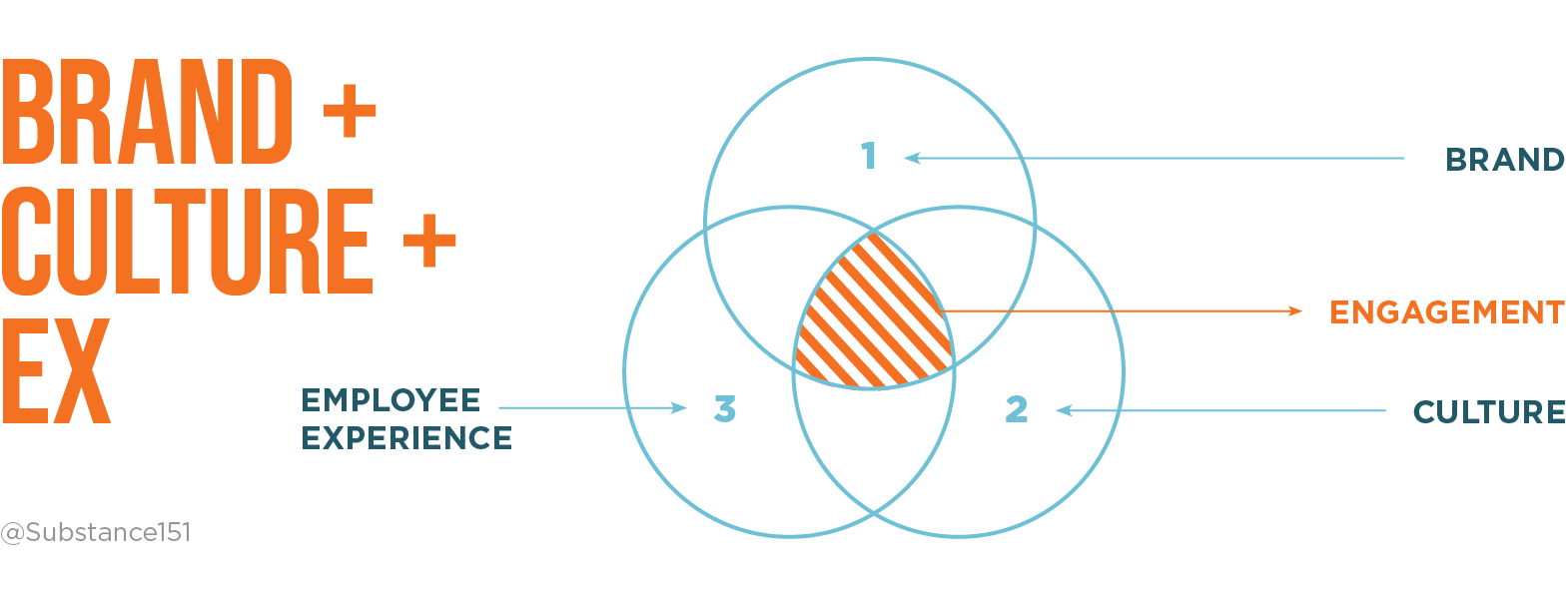
Everything in marketing starts with the brand.
The commonly used terms “employer branding” and “employee branding” are misleading, as they imply that there should be a separate brand, or a separate version of the brand, developed for employees.
You must have a single, unified brand, and it must be integrated into everything your company does – from its long-term business strategy to daily actions, across all departments, functions and communications. So, instead of creating a separate employer brand, develop your brand with both customers and employees in mind.
Related Article: The Forgotten Audience: Crafting Your Brand to Attract and Keep Talent
It’s important to note that within the overall brand platform, there are three core elements that are central to engaging your employee audience.
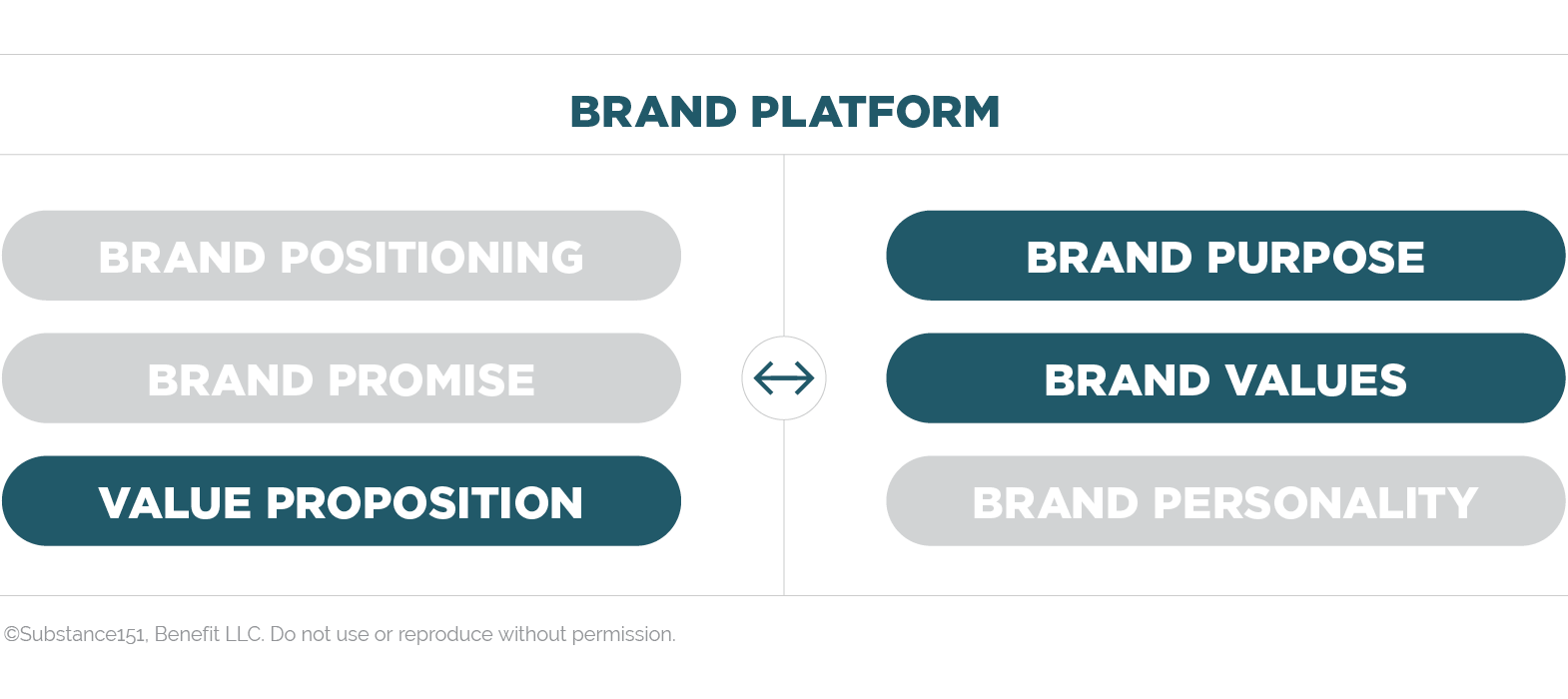
Today, people want to be part of something bigger than themselves and work for companies that stand for more than advanced technical capabilities, exciting projects and happy clients.
In other words, they want to work for companies that are defined by a larger purpose and have values aligned with their own.
Brand purpose is not the same as corporate social responsibility, it’s not a sustainability strategy or a strategy for philanthropy. It’s a business strategy that guides everything you say, do and stand for – internally and externally.
Learn more about brand purpose
To become a company that everyone wants to work for takes more than a well-crafted marketing message. Having a purpose-driven brand is essential if you want to attract top talent.
Brand values are the code by which your brand lives.
Brand values prescribe the desired mindsets and behaviors, ensuring that everyone does the right thing. It’s your right vs. wrong filter – for everything from hiring and promoting the “right” people to defining corporate behaviors and actions.
When developing your brand values, stay away from generic statements like “we care,” “best quality” or “teamwork.” Instead, craft value statements that are unique and express the spirit of your company.
Only 32% of companies communicate their values to candidates and employees (source: Gallup).
For example, to communicate the value of quality, Google states, “Great isn’t good enough!” Zappos’ “Delivering WOW through service” communicates a lot about the company, and it’s much more unique than “exceptional customer care.”
These values also make it very clear to employees what they are expected to deliver.
A value proposition is the tangible benefit, or outcome. For customers, it’s the value of doing business with your company. For employees, it’s the value of being part of your team. What’s in it for them?
The value proposition is one brand element that can be tailored to specific audience segments. For example, you may tailor a client value proposition for each key customer market.
Learn more about value proposition
Depending on your overarching value proposition, you may also need to tailor it to the employee audience, in which case you will have one value proposition for customers and a separate one for employees. Both must still be aligned with your overall brand.
Why should candidates choose your company? Research shows this is not about a benefits package or even free happy hours. Think beyond that. What is the long-lasting positive impact on someone’s career if they choose your company?
Every company has a culture. It may not have been intentionally planned, but it’s there.
By being intentional and building a culture around your company’s purpose and values, you get to align all employees with the brand and cultivate those attitudes and behaviors that you want to drive your company culture.
Most importantly, an intentional culture will help to attract the right people to your company. A strong sense of purpose, a unique set of values and a clearly defined value proposition will attract those candidates who are like-minded and who see the value of working for your company beyond purely transactional – moving you higher on the engagement pyramid discussed earlier in the article.
Employee Experience (EX) is defined by how well your company delivers on its promise to employees.
Employee Experience encompasses all interactions an employee has with your company – from recruitment through employment to the exit interview. EX is not an HR function. HR is only a part of it. EX includes everything from physical environments to operations, communications, culture and more.
To better serve the unique needs of your candidates and employees – and to provide a more tailored, personalized experience that will help you attract, engage and retain them –segment your candidates and employees into distinct groups that have similar characteristics.
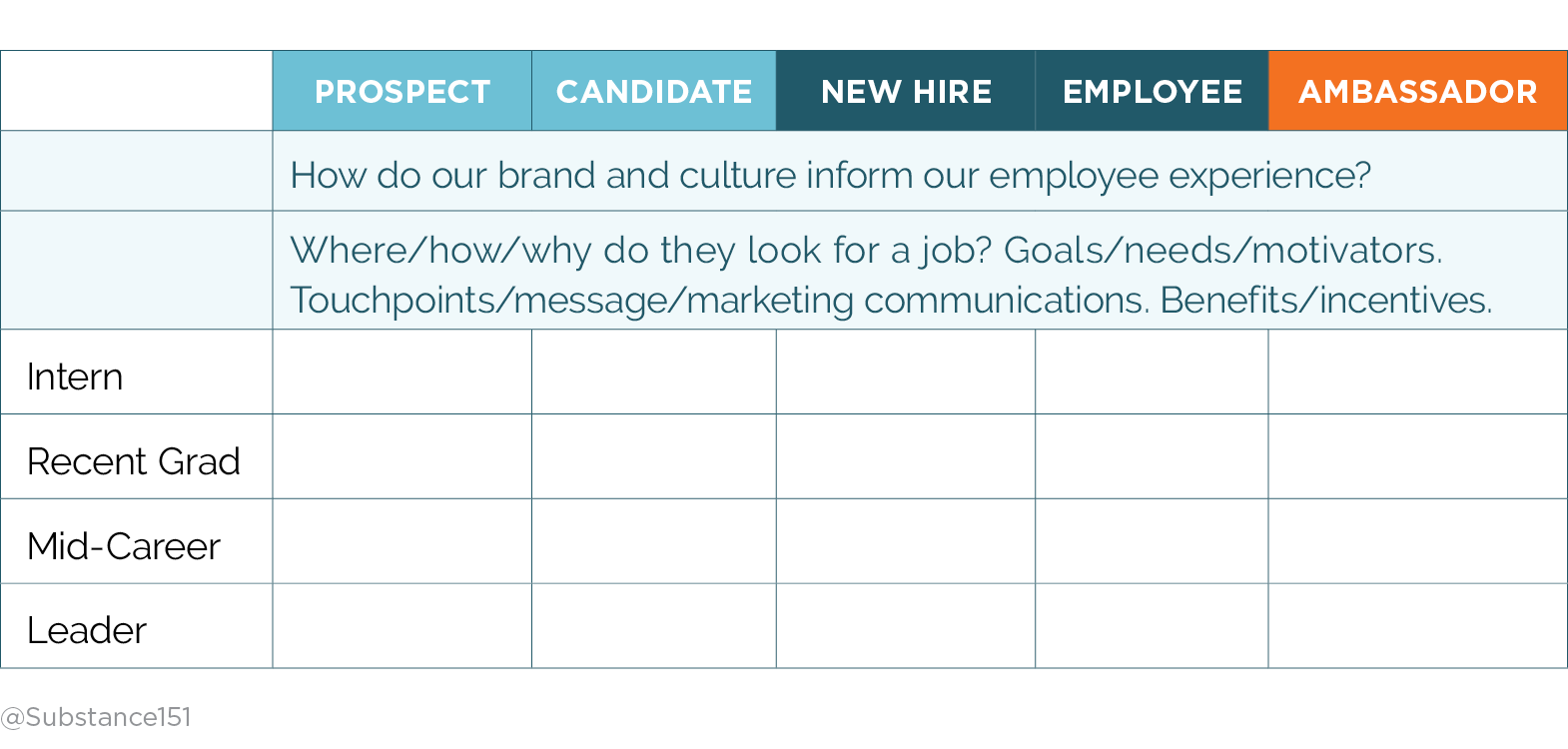
Different employee segments have different goals, needs and expectations, and require different marketing strategies and types of communications.
The most typical way to approach segmentation is by career levels; however, you may need to get more granular and include job roles or other factors. For example, recruiting for marketing roles could look very different from recruiting for technical positions.
To enable deeper personalization of communications and experiences, develop an Ideal Employee Profile and employee personas. These should be formally defined, documented and shared across your organization.
Similarly to the Ideal Client Profile (ICP), the Ideal Employee Profile is a high-level snapshot of the type of people who thrive in your culture and work environment. It’s also the type of people who share the characteristics essential for your company to deliver on its brand promise to customers.
Business leaders need to understand what motivates employees to join a business, what makes them stay and what encourages them to identify with organizational roles.” – Nicholas Ind
Take the time to create meaningful employee personas (typically 3 to 5), following the same process you use for developing customer personas.
Download tips for developing customer personas
Don’t create personas based on assumptions – begin with research. One way to learn more about what your prospective employees are looking for, and what you need to say, do and show to attract your ideal candidates, is to survey your current employees.
What first attracted them to your company? Why did they select you? What was their candidate experience like?
Map a journey for each persona. Similar to customer experience mapping, this exercise will allow you to see your company experience through the eyes of candidates and current employees.
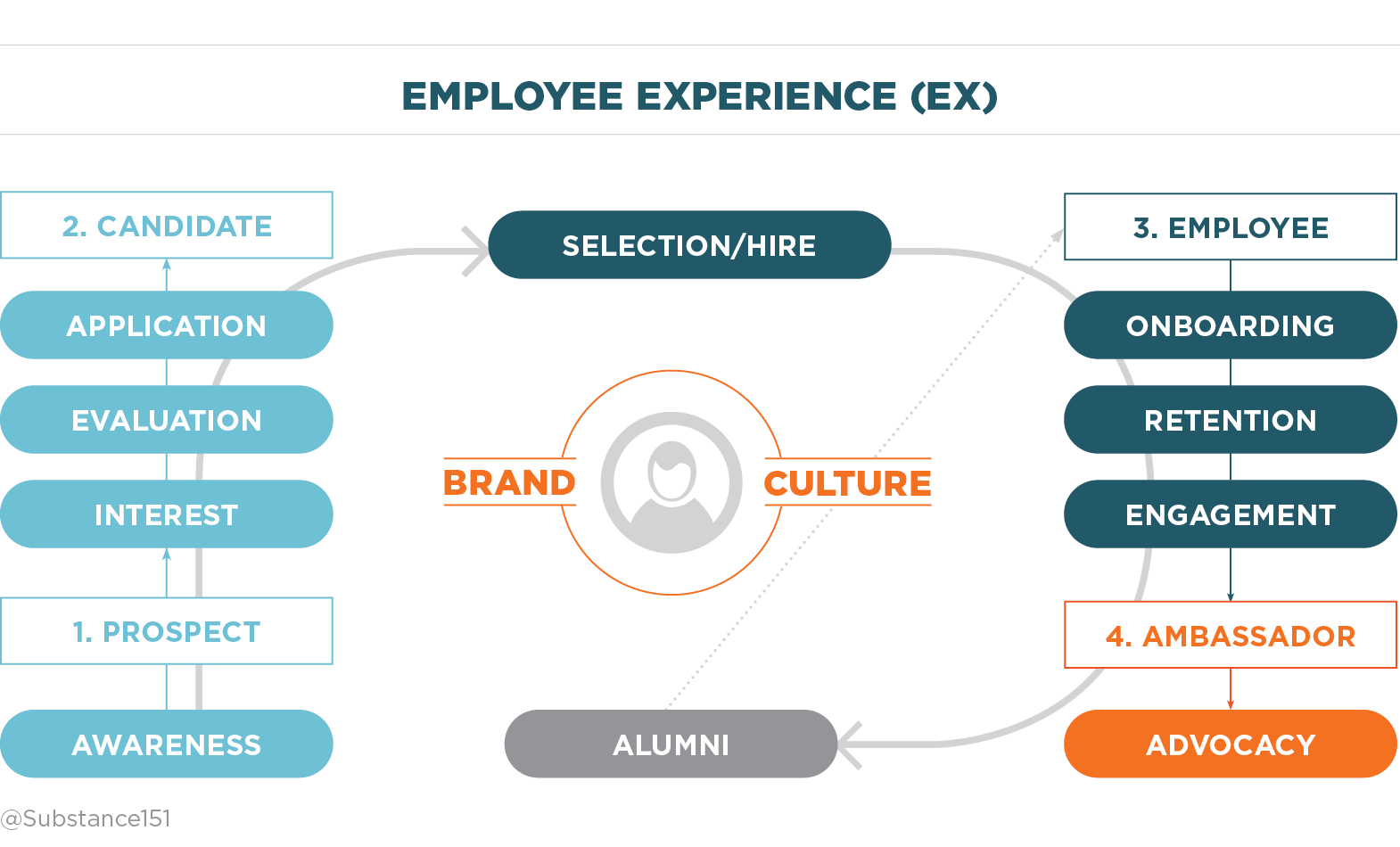
The number of stages and their naming conventions may vary, and there’s a multitude of touchpoints, interactions and meaningful moments within each stage that you will need to define in great detail for each employee persona.
Prospect
Attracting ideal employees to your company begins long before they are actively looking for a job – similar to how you market to your ideal clients long before they’re looking for your services.
Building awareness and becoming the top choice in your prospective employees’ minds long before they consider applying is essential for building a healthy candidate pipeline.
Candidate
In these early stages of the candidate journey – the courtship phase – consider the alignment of your brand, culture, marketing communications and experience.
Does your Careers page align with the image created by employees on social media and review sites, such as Glassdoor?
Are your recruitment communications and materials on-brand? Are they differentiating and engaging? Do they accurately convey your brand personality?
Consider every interaction and touchpoint. For example, generic rejection letters rarely build goodwill or do anything to strengthen your company’s brand. Think about when your project proposal gets rejected – you appreciate a debrief, a personal note, maybe a phone call. It’s all part of the experience.
New Hire
This is the first post-courtship experience a new employee has with your company. Make sure it doesn’t feel like the honeymoon is over!
While everyone is excited to have the new employees on the team, do your accounting, HR and legal processes feel as welcoming? Or does your legal counsel treat all new employees like enemies that the company must be protected from? Remember, all functions and departments must act consistently on-brand.
And this is marketing’s job – to ensure the alignment between brand and culture and internal and external messages and communications.
Onboarding is the first step in turning your new employees into lifelong brand loyalists.
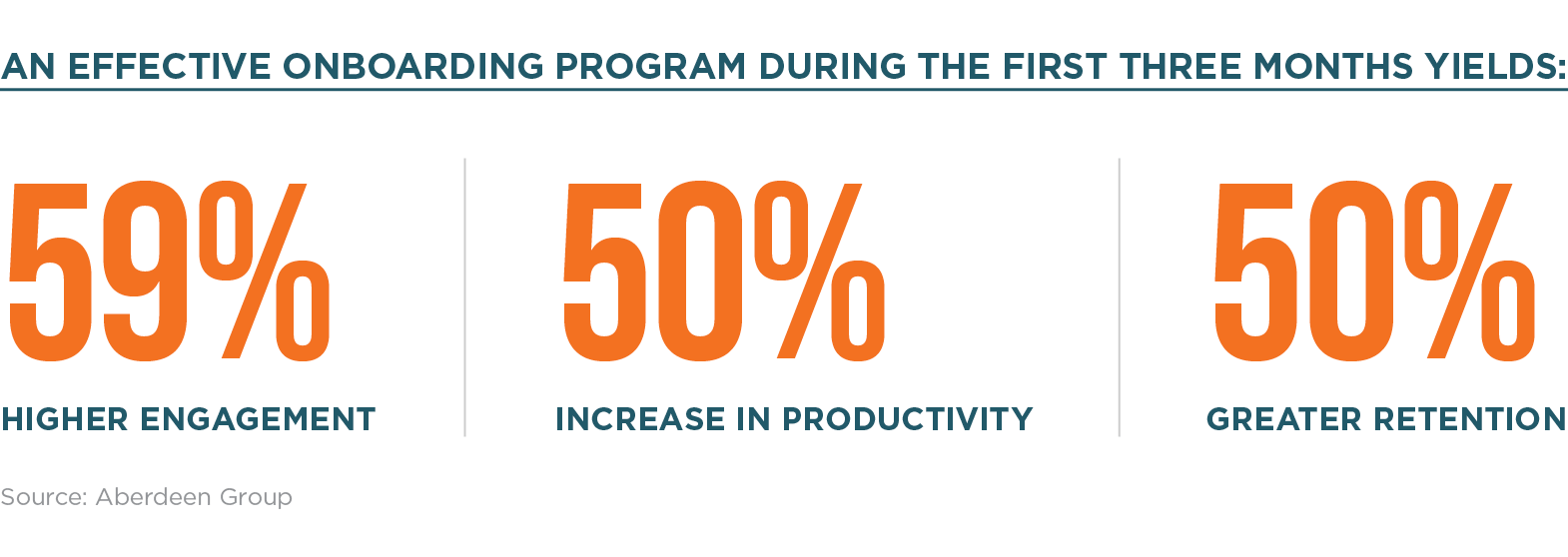
Do they spend the first day doing paperwork and touring the supply room?
Or do they have a day filled with meaningful moments that make the brand story your firm told during the recruitment process come alive – immersing new employees in your brand and culture, not mind-numbing administrative tasks?
Employee
Your company has to be on the inside what you say you are on the outside. All policies and procedures, performance evaluations, rewards and promotion criteria must reinforce your brand, values and culture.
Develop meaningful employee handbooks that promote the values-based behaviors you want to cultivate. Package your handbooks in a way that’s engaging and on-brand – it will significantly increase the chances of them being read and used.
Ambassador
How your team comes together and celebrates successes, the type of legendary stories you pass along to the next generation, all the rituals and artifacts that you create and cherish – all of these directly contribute to employees’ understanding of the brand and what it means to act on-brand.
And just like the branding process itself, the brand education and engagement effort must be ongoing, reminding employees daily what your brand stands for and making them feel personally aligned with the brand.
Learn more about living your brand beyond brand rollout
Alumni
Not burning bridges applies to employee strategies as much as it does to business in general.
Exit interviews and the experience around those last two weeks of employment could make a huge difference for continued employee advocacy.
Employee feedback is also central for improving your company’s employee experience. Having real data can help you make changes with real and measurable impact.
Marketing and sales teams use funnels to map prospect behaviors to each buying stage and to provide the right message and content to the right persona at the right time in their decision-making process.
Using the same principle, build a sales funnel for employee personas to help your company strategically and effectively move candidates and employees along their journey.
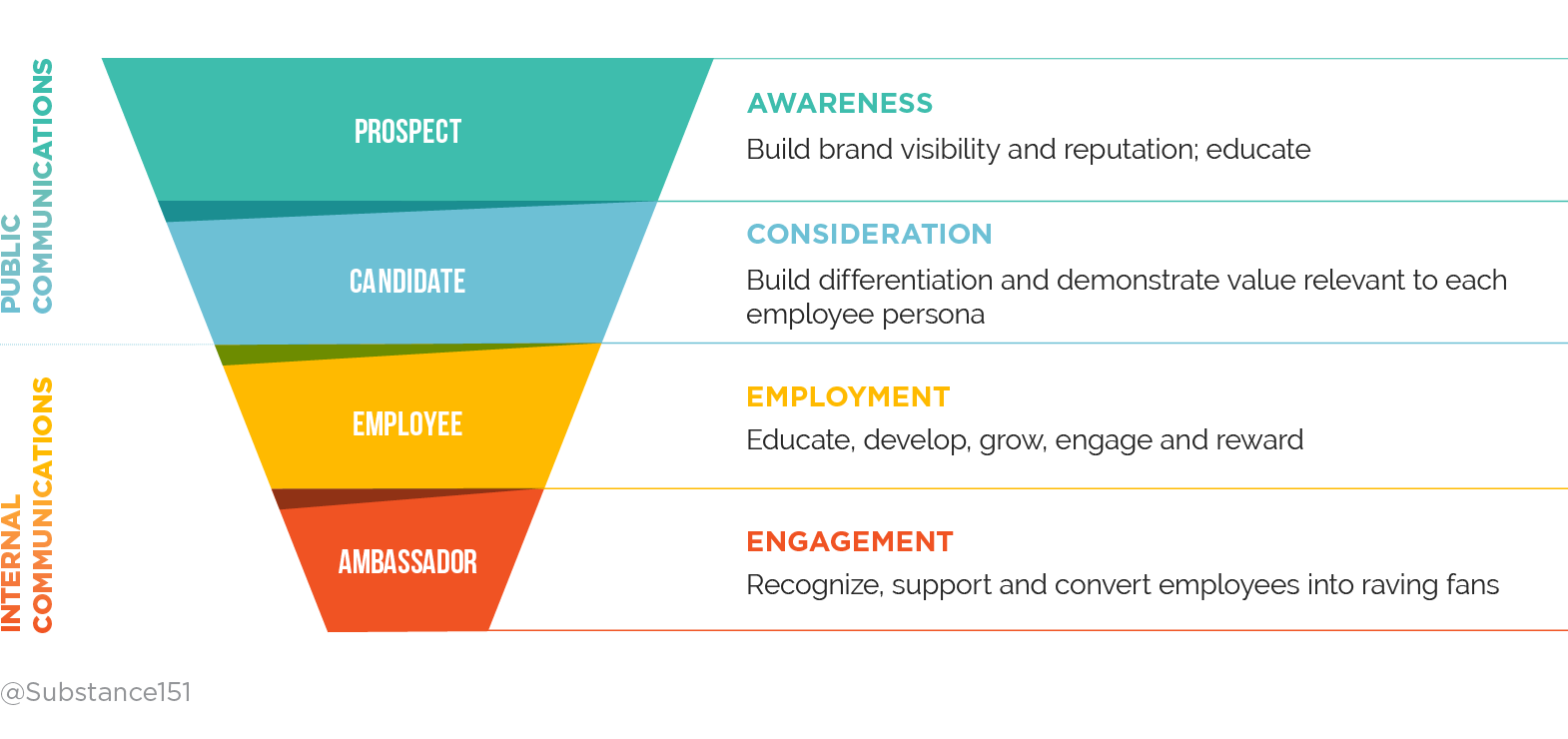
The top of the funnel is where your recruitment marketing is focused. Just like in customer marketing, your campaigns should be designed to attract your ideal candidates and engage them with useful, relevant, personalized messages and content.
The bottom of the funnel focuses on employee engagement campaigns. Companies that consistently invest time and resources to develop meaningful internal communications and programs have much higher levels of employee engagement.
To unleash the power of employee marketing, leverage the modern marketing principles that have proven successful in attracting, engaging and retaining your ideal clients.
Download a free PDF of this article here.